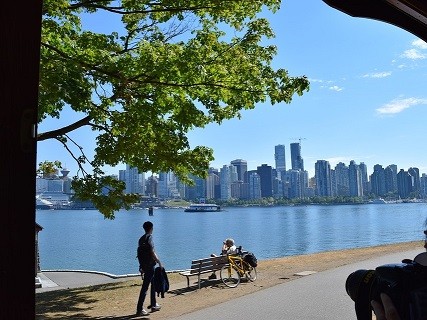Investing in urban forests makes economic sense, study finds


We all know that trees are a plus for any city. Trees provide excellent shade, keeping us cool in the summer. They eat up pollution and smog, they reduce our stress levels and beautify the urban landscape. Trees absorb noise pollution, they make great homes for a variety of city dwelling creatures. And so on.
But the precise return on investment of adding more trees to the city? That would be a nice figure to have on hand.
Enter a team of researchers led by scientists at the University of Illinois currently in the midst of a large-scale investigation into the health benefits of trees, drawing on satellite imagery as well as extensive data on the health history of some four million residents of northern California.
“The reason this study has never been done before is that it’s really hard to infiltrate insurance data,” said Matt Browning, assistant professor at the University of Illinois at Urbana-Champaign’s College of Applied Health Sciences, to the Conservation Finance Network. “Most studies look at subjective measures of health. This is a really novel study that’s taking a long time to have all the administrative elements worked out. We’re hoping to have results in the fall.”
Browning and colleagues paired up with US insurance company Kaiser Permanente to track 20 years of health records and demographic information, what Browning calls, “the best data set I’ve ever heard of for this line of research.”
Past research has shown that trees have positive health effects. One well-known study from the 1970s found that hospital patients whose rooms had a view of trees recovered more quickly than similar patients whose windows looked out on another building. A 2015 study of the urban forest in the city of Toronto found that an increase of ten or more trees per city block equated to residents feeling, health-wise, seven years younger.
That type of accounting the health savings per added tree is the aim of Browning’s comprehensive project, which hopes to create a data tool for use by municipalities to assess the cost savings to be had through planting more trees. “We’re expecting a 1:10 to 1:100 ratio for investment in urban green space with regard to reduction of health care expenditures,” Browning said
The researchers want emphasize how the return on investment varies depending on the area of town, as poorer neighbourhoods typically have fewer trees and lawns than high-income areas — and thus, could benefit more from urban forestry investment.
“We’re interested in assessing whether traditionally underserved populations have differentially better outcomes from small increases in urban forestry,” Browning said. “There’s actually the possibility that very marginal investments in green space in poor areas would make more of a difference than incremental investments in green space in rich areas.”
The overall impact that trees have on air pollution was assessed in a 2014 study by the United States Forest Service, which concluded that trees and forests in the US removed 17 tonnes of air pollution in the year 2010, effectively preventing 850 human deaths and 670,000 cases of acute respiratory symptoms and cutting health care costs by $6.8 billion.

